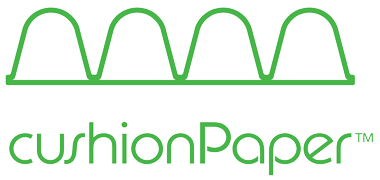Today, more than ever, the issue of commitment to environmental protection is at the heart of the agencies of public and private institutions all over the world. If once, in fact, the commitment to a generic “reduction of pollution” was left to the common sense of the individual citizen or single company, today the ecological approach has fully entered into legislation, national and supranational, in the budgets , in market trends and daily debates, thus becoming a topic that can no longer be ignored or postponed.
The packaging market is well aware of this, which is looking at the theme of ecology with increasing attention and passion, designing and putting on the market products and materials that are attentive to the environment but also to the wallet, without losing sight of the necessary functionality that packaging must have in the transportation of items.
In this article, therefore, we will highlight the reasons why industrial ecological packaging represents the products of the future, in a world that is increasingly (and with good reason) attentive to policies and attitudes that encourage an economy that is, at the same time, , blue and circular. To deprive ourselves of it, still supporting obsolete policies, would mean not only facing the risk of sanctions, but also ignoring market trends and consumer requests.

Because the law requires it

Since 2015, the year of the Italian EXPO, the UN has promoted the so-called SDGs-Sustainable Development Goals, the sustainable development goals: 17 “goals” (including the themes of sustainable production and consumption and protection of the terrestrial ecosystem with particular attention to water) aimed at implementing the circular economy, a system capable of “preventing the generation of waste, extending the life cycle of products, promoting reuse and maximizing recycling”.
The EU interest in the circular economy has also affected the world of packaging:
with the 2018 packaging directive, in fact, the Commission established that by 2025 each Member State will have to recycle at least 65% (which will increase to 70% by 2030) of its packaging waste, differentiated by category. Single-Use Plastics (SUP) of 2019, on the other hand, Europe bans some single-use plastic products by 2021.
Because market trends indicate it
The research “Thinking circular. Resources and ideas for sustainability “by Conai (National Packaging Consortium) and RCS, commissioned at the Department of Business Administration of the Roma Tre University, wants to take stock of the world of sustainability in packaging and the upcoming challenges that await it, also in light of the latest developments in EU legislation. To do this, among the various actions undertaken there was the administration of some questions to a panel of over 30 including sustainability managers, quality managers, commercial directors, marketing directors and technical directors of companies at national or international operating on the Italian territory.
“The interviewees – reports the research -, in their entirety, report an evolution in market demand: attention to the costs and effectiveness of packaging in terms of protection (which still remains) is added to the request for packaging that impacts less on the environment thanks to optimizations in the use of resources and also radical innovations (new materials). The trend is towards the circular economy, whereby it is designed and implemented to a minimum and reused to the maximum “.

Because they improve the brand reputation

As the research reports, the Institute of Management of the Sant’Anna School of Advanced Studies conducted a survey on economic-oriented consumption trends in 2019: it involved 1,643 people identified as purchasing managers for their household. Well, interesting numbers emerge from the study also to support our thesis: packaging, in fact, turns out to be “an effective tool for product branding and communication. 55% of respondents are convinced that there is a relationship between packaging and product, that is to say that in many cases the consumer perceives, through the packaging, the characteristics of the product, including those of sustainability and quality “.
An interesting fact for those companies that want to equip themselves with industrial ecological packaging: the latter, in fact, improve the reputation of the brand, conveying a positive message of environmental responsibility to consumers.
Because they are good for the environment
Industrial ecological packaging has the application of a 100% eco-friendly supply chain. On the one hand, their production is carried out with bio material coming from elements present in nature or born from a recycling activity. On the other hand, their use (or, perhaps, it is better to say reuse) and their disposal cause a very low emission of CO2 and harmful greenhouse gases, with the result of a real benefit for the entire ecosystem.
